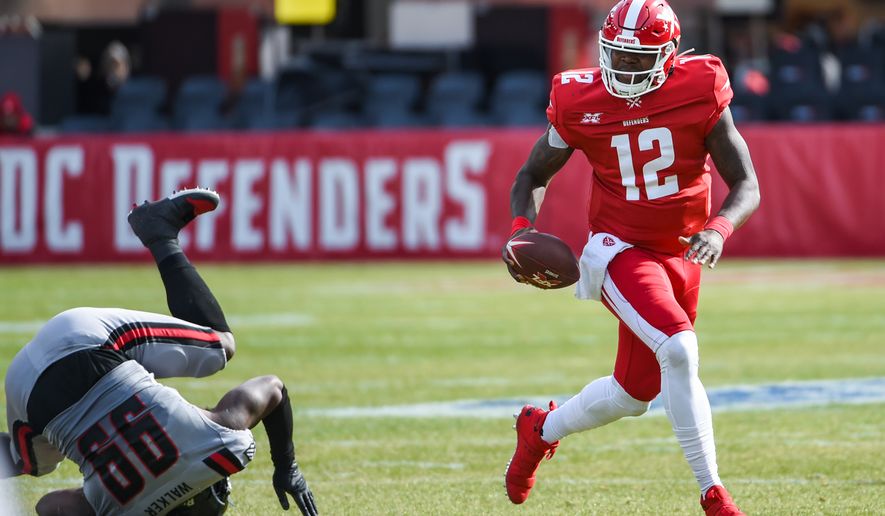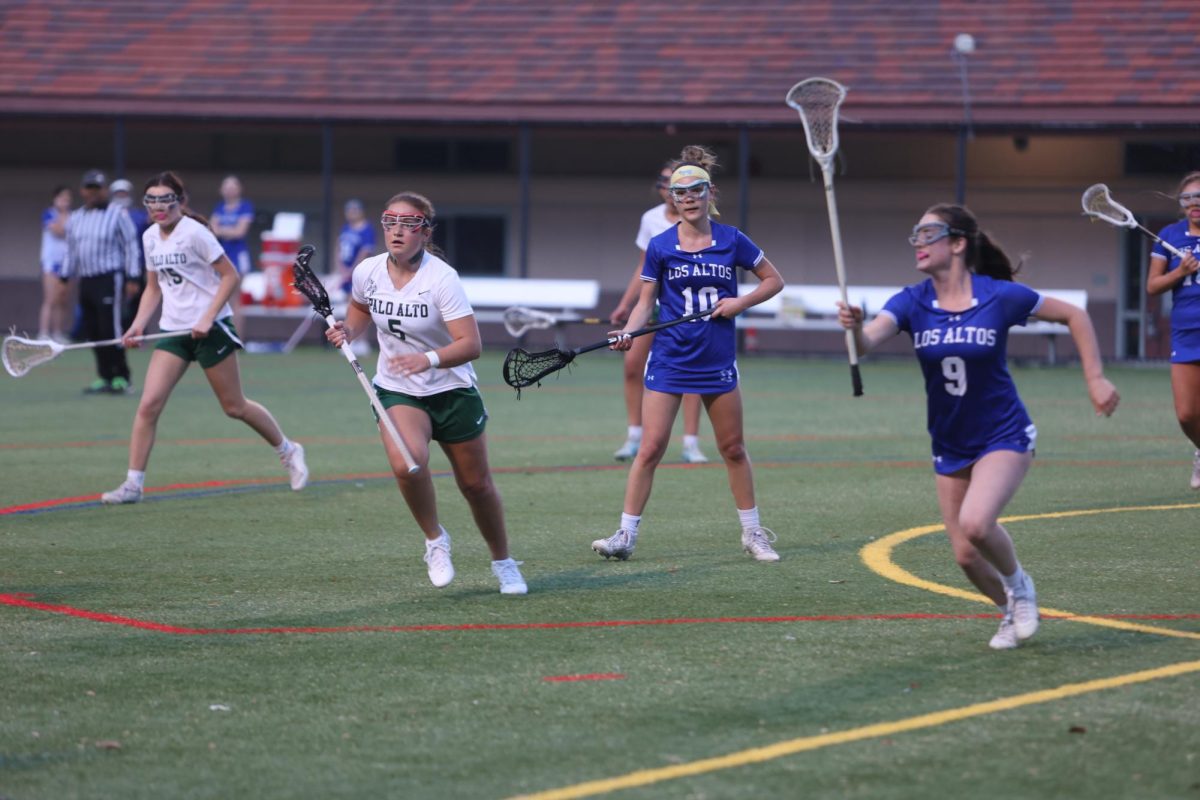Why the XFL is Going to Succeed
March 27, 2020
With the final moments of the Super Bowl signaling the end of the NFL’s season, many diehard football fans consider the end of the traditional postseason to mean the last of any high-level football until college football returns in August. However, even with the NFL’s absence, the end of the Super Bowl signals a beginning, too: the kickoff to the XFL’s season. The XFL’s regular season began less than a week after the Super Bowl. But beyond serving as a convenient bridge for sports fans–no more suffering through the long, tired months from February to August filled with football-less days–the XFL has the potential to fill a key hole in the NFL itself.
The XFL’s goal is not to compete with the NFL, but rather to complement it. After all, the two leagues participate in two different times of year; it’s generally understood, too, that the NFL is the more established league. It’s been around for far longer, it’s more widely recognized, and the best athletes will likely target the NFL as their professional league of choice.
Thus, the XFL sees itself in a unique position. It’s not a minor league to the NFL’s majors. It’s not entirely separate; the XFL has molded its schedule around the NFL’s, has advertised itself as a solution to the post-NFL blues.
It’s a rare position–one that can be utilized to turn the XFL into more than just an NFL counterpart.
Most other leagues–the NBA and the MLB, notably–are composed of more than just the “majors.” The NBA’s G-League, for instance, is a developmental league for players not quite ready for the main NBA; it offers teams the opportunity to develop players beyond practice scrimmages. The G-League, for all intents and purposes, is a secondary NBA, with a few advantages. It offers underrepresented geographic locations to have a professional team, which can serve as a test-run before expanding to create new teams; it allows undrafted or unsigned players to play in a subset of the NBA itself rather than playing overseas; and above all, it’s intrinsically connected to the NBA itself. The G-League’s two-way contracts create a unique situation where a player is able to play the majority of their games in their G-League team, but also be called up and play with the main team.
It’s one of the first instances of a developmental league and professional league being tied so directly. In the MLB, minor league players are able to get called up at random to play in the majors, sure–but the G-League’s connection to the NBA has bridged the gap better than we’ve ever seen before.
It’s been, overwhelmingly, a positive addition to the NBA, and a productive avenue for young players.
The XFL can–and should–serve the same role for the NFL.
The league can be a path to the NFL for players cut or undrafted out of college. Its slogan, “for the love of football,” explains how the league is not focused on taking out the NFL, but to provide fans with more football and provide players with a path to have their talents recognized, and perhaps to make large amounts of money in the NFL. The XFL may also be the path for college football players to leave college and play professionally, and then get drafted into the NFL, since there is no college eligibility requirement for XFL players, while there is a three year requirement in the NFL.
In the XFL, there are no major superstars, the league consists of many football players who were practice players or recently cut NFL players. An important player to watch may be Shawn Oakman of the Los Angeles Wildcats, who was a former projected first round pick in 2016 out of Baylor, but was not drafted by any NFL teams when he was accused of sexual assault. Oakman was eventually found not guilty on the charges, and is now looking to find a path to the NFL through the XFL.
Beyond its potential to serve as a route from obscurity to the NFL, the XFL also has the liberty to play around with some of the more rigid rules of the NFL. Testing these rules in the XFL could lead to the implementation of new rules in the NFL––it’s no secret that many of the NFL’s current rules seem outdated and in dire need of change, but implementing large-scale change with no precedent is difficult.
The G-League again provides an example of a successful “guinea pig” system. In the G-League, the implementation of a “challenge flag” system similar to that of the NFL’s was tested. Then, after seeing the viability and logistics of the rule change on a small scale, the NBA decided to add the system to the traditional league.
The XFL already operates similarly. It has exciting new rules that keep the game interesting while safe. The new kickoff format, which has the kicker kickoff at the 30 yard line and attempting to kick the ball in between the goal line and twenty yard line. Most notably, the coverage team lines up five yards from the receiving team at the 35 yard line. This kickoff is designed to promote returns instead of touchbacks while keeping the game safe because coverage teams won’t be running full speed into each other.
Additionally, having one foot inbounds counts as a catch. This rule is meant to have more explosive plays, thus making it more entertaining to watch. There also are no extra points, instead teams decide to take one, two, or three point attempts from increasing distances from the goal line. This rule can make games end at closer scores, again making the games more fun to watch. Many of these rules should be taken into consideration by the NFL. Although ratings are not low currently, they could be in the future, as well as the league demonstrating effort towards maintaining player safety.
There is no greater guarantee of a league’s success then a vote of confidence from the very mouth of the games most devoted fans. Michael Cullen (‘11), former Palo Alto football player for the 2010 State Championship team, has been a lifelong football fan who has invested himself in the new football league.
“This iteration of spring football is different than anything that has come before it. It has the financial structure to last through the few years it will need to carve out a niche. The football is good and there is definitely a market for it!” Cullen (‘11) said.
When speaking of what “has come before”, Cullen was referencing the AAF league that had attempted to squeeze its way into the professional football market last spring in what turned out to be a drastic failure. The league was bankrupt within two months of their initiation, but the XFL faithful are not worried about an early end to their beloved new league.
“The thing that historically has killed spring football leagues is a lack of a financial base. Vince McMahon has the capital to support the league while it carves out a foothold and an identity.” Cullen said.
In addition, the XFL has a lot of room to add to the masses that have already gathered to watch this spectacle of spring football. With only 10 teams across the nation, there are plenty of untapped fan bases that await a team to be established within their vicinity.
“I think they should consider relocation if they don’t have sustainable fan bases in certain markets. It would be cool to see Sac, San Jose, or Oakland get a team” Cullen said.
Whether or not the league has long term potential is completely up to its fans, and they have made it very clear that the XFL is a league that they will tune into for a long time coming. The XFL may not be gunning for the monopolistic power that the NFL currently has in the football market, but they sure are transforming the conventions of the sports community.
“In most cases it’s either a second chance for guys who kicked back from the NFL, or the last ride for some veterans who had their run there…I think it could morph into something else based on the job they have done so far and the concepts they have produced. Some of the things they’ve done are undoubtedly under consideration by the NFL” Cullen said.
Thus, the league will stay around and can be a pipeline to the NFL, similar to how the G-League complements the NBA. When superstars emerge from the XFL, they will be signed by the NFL.











